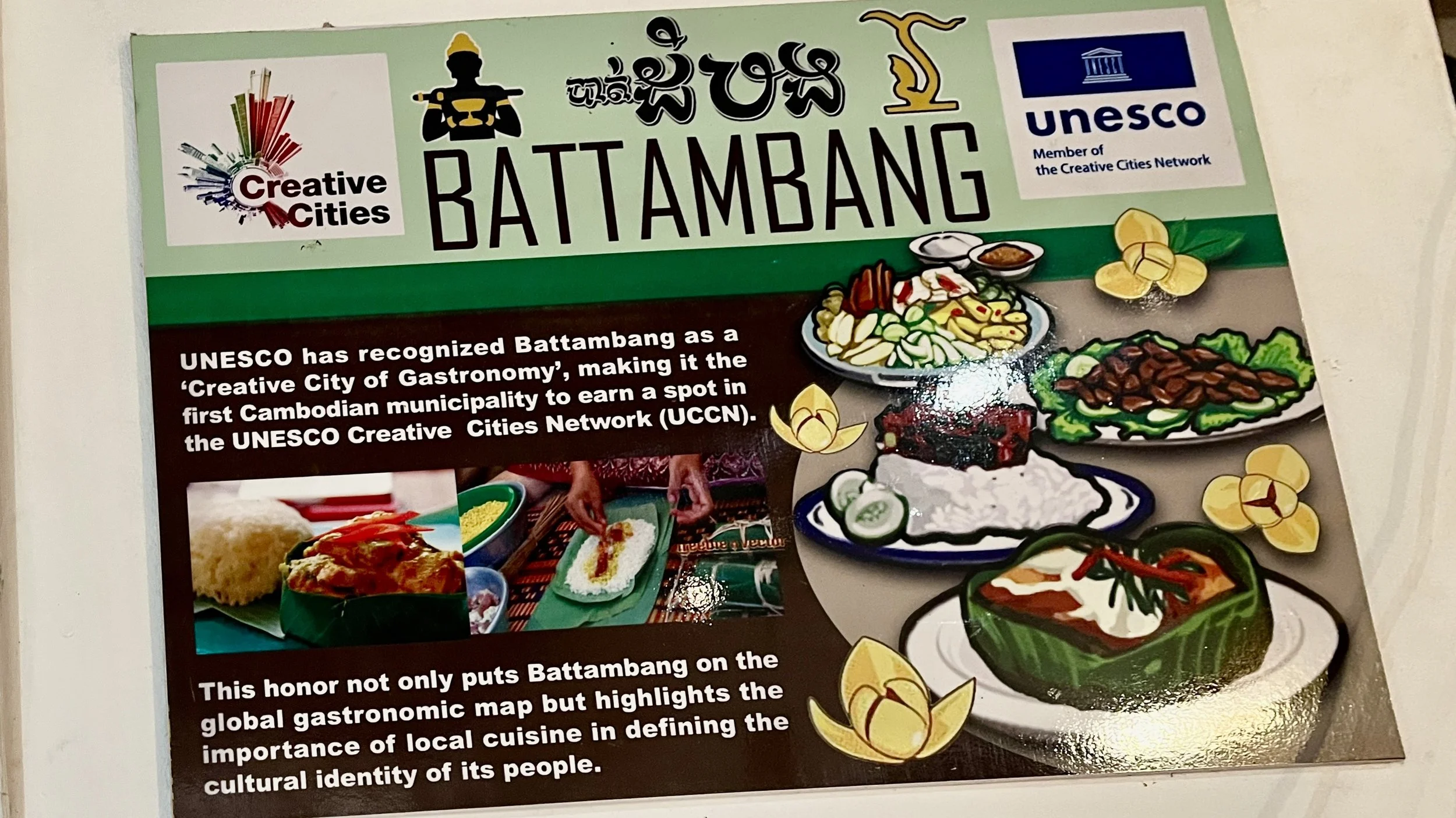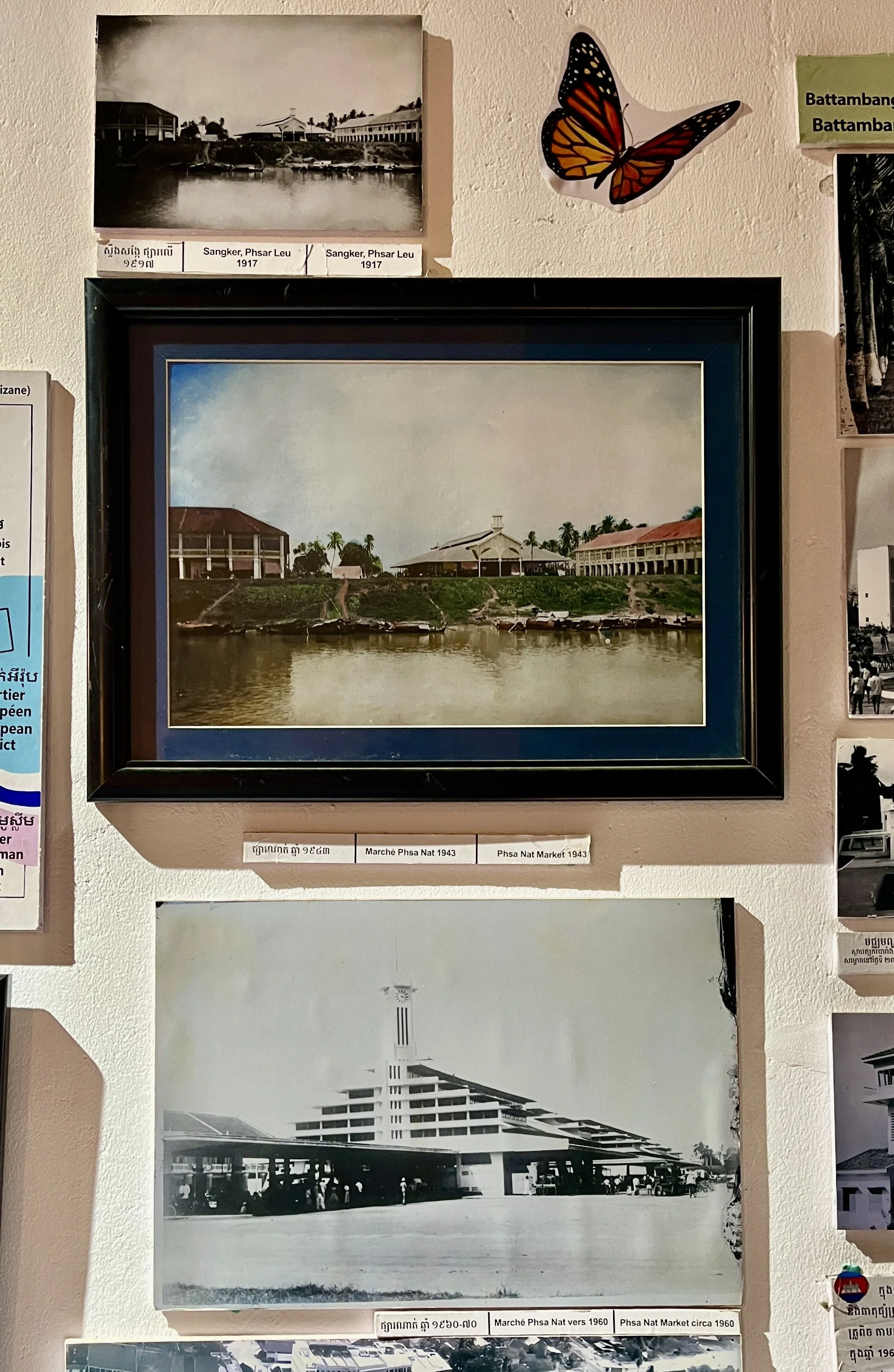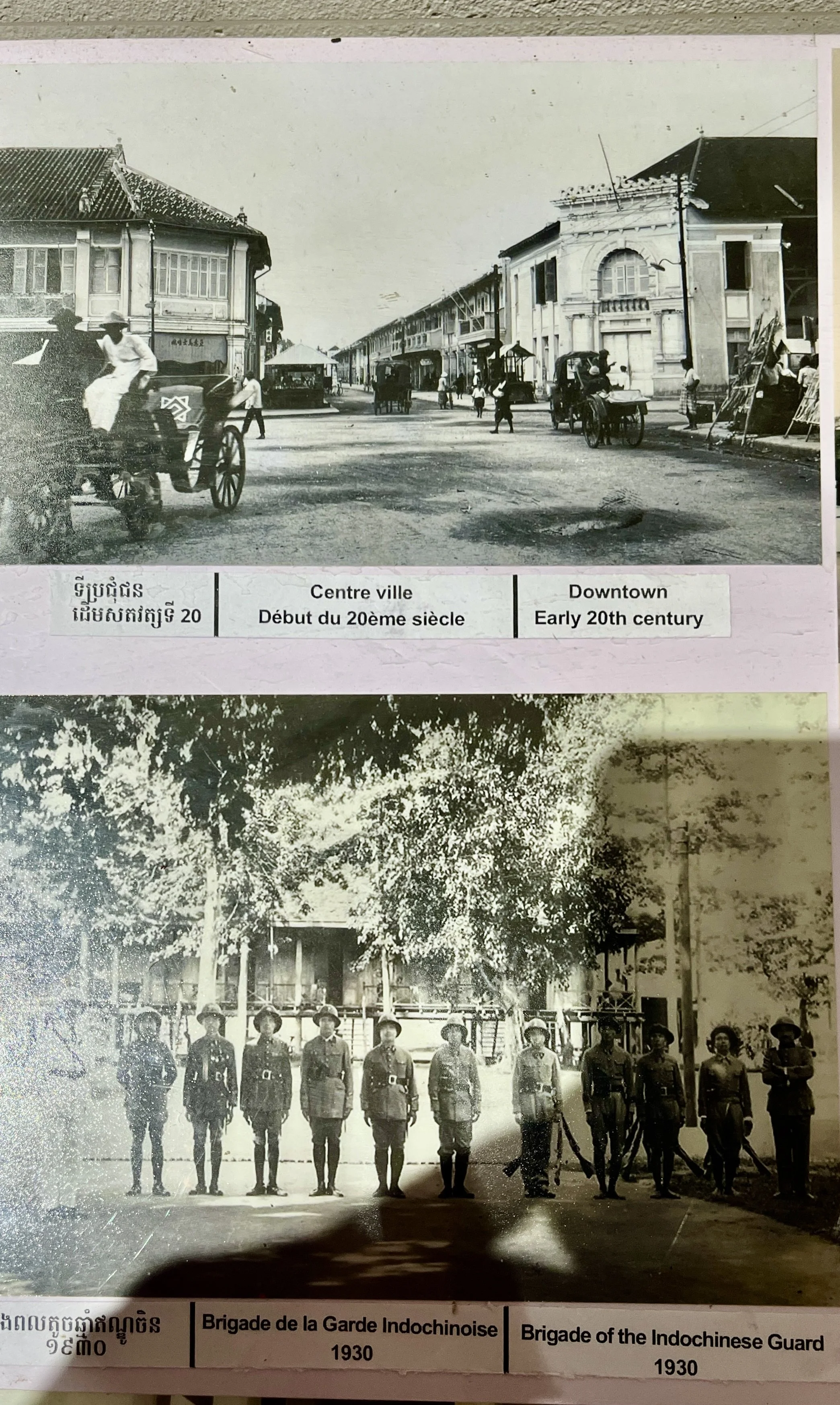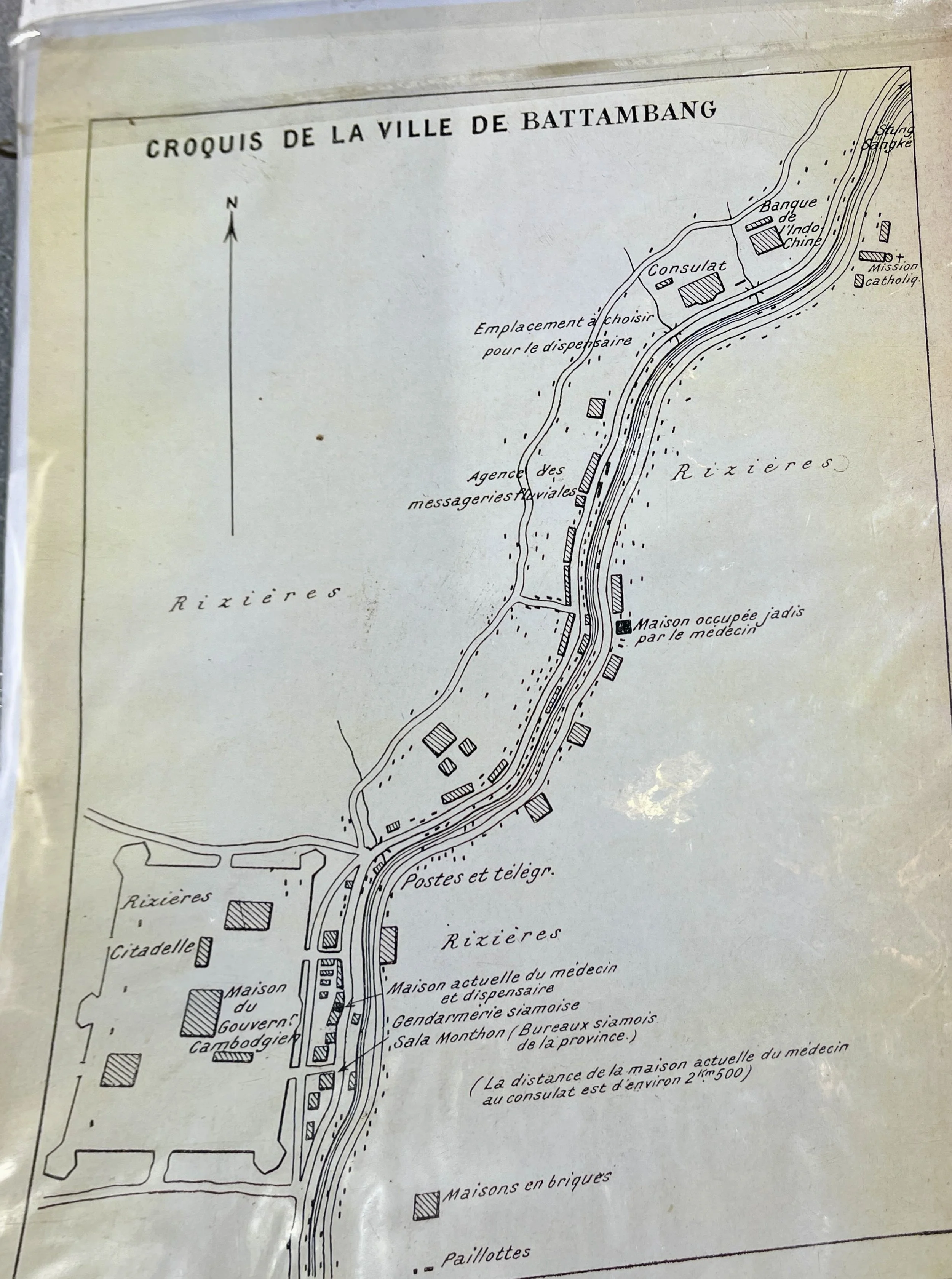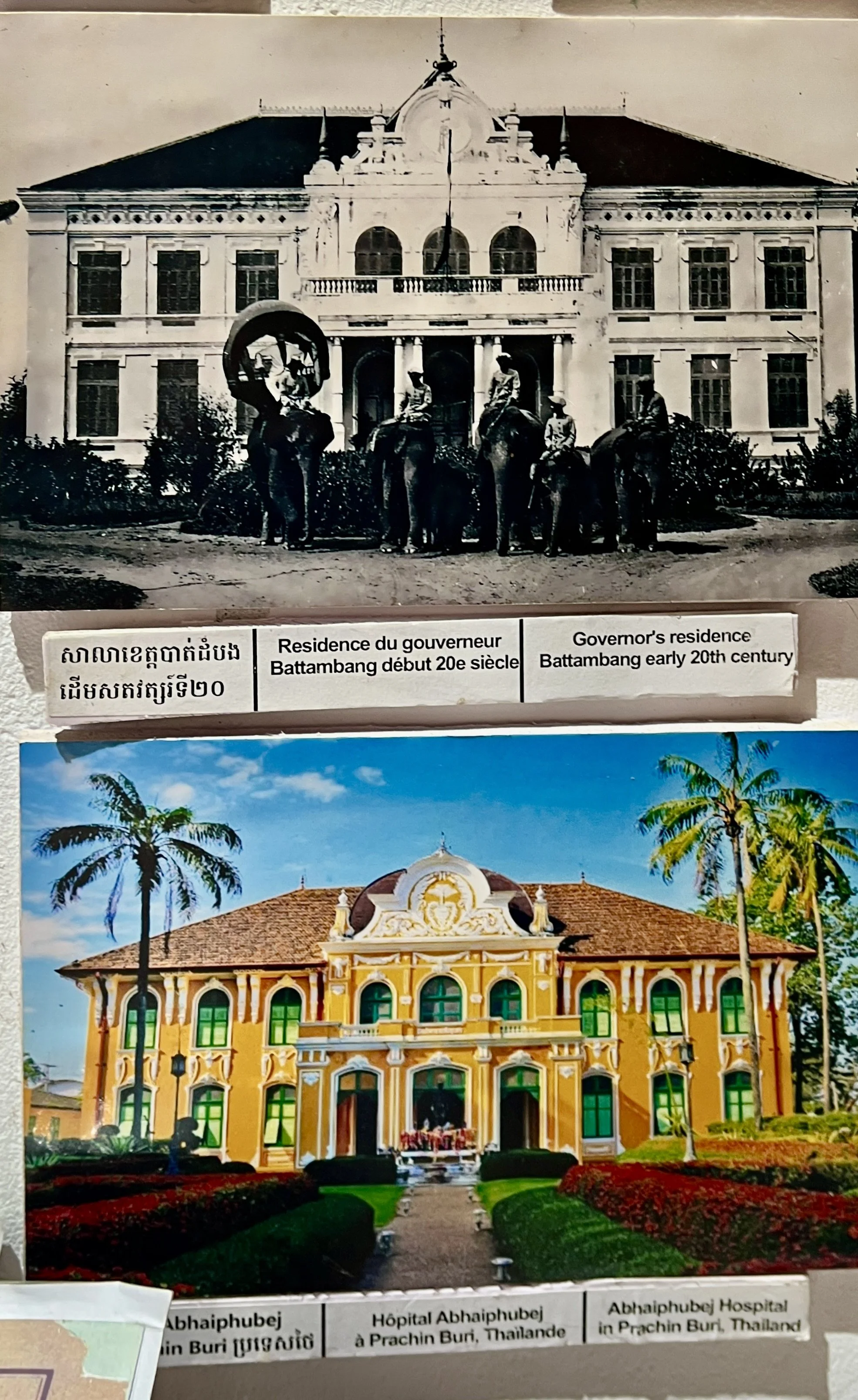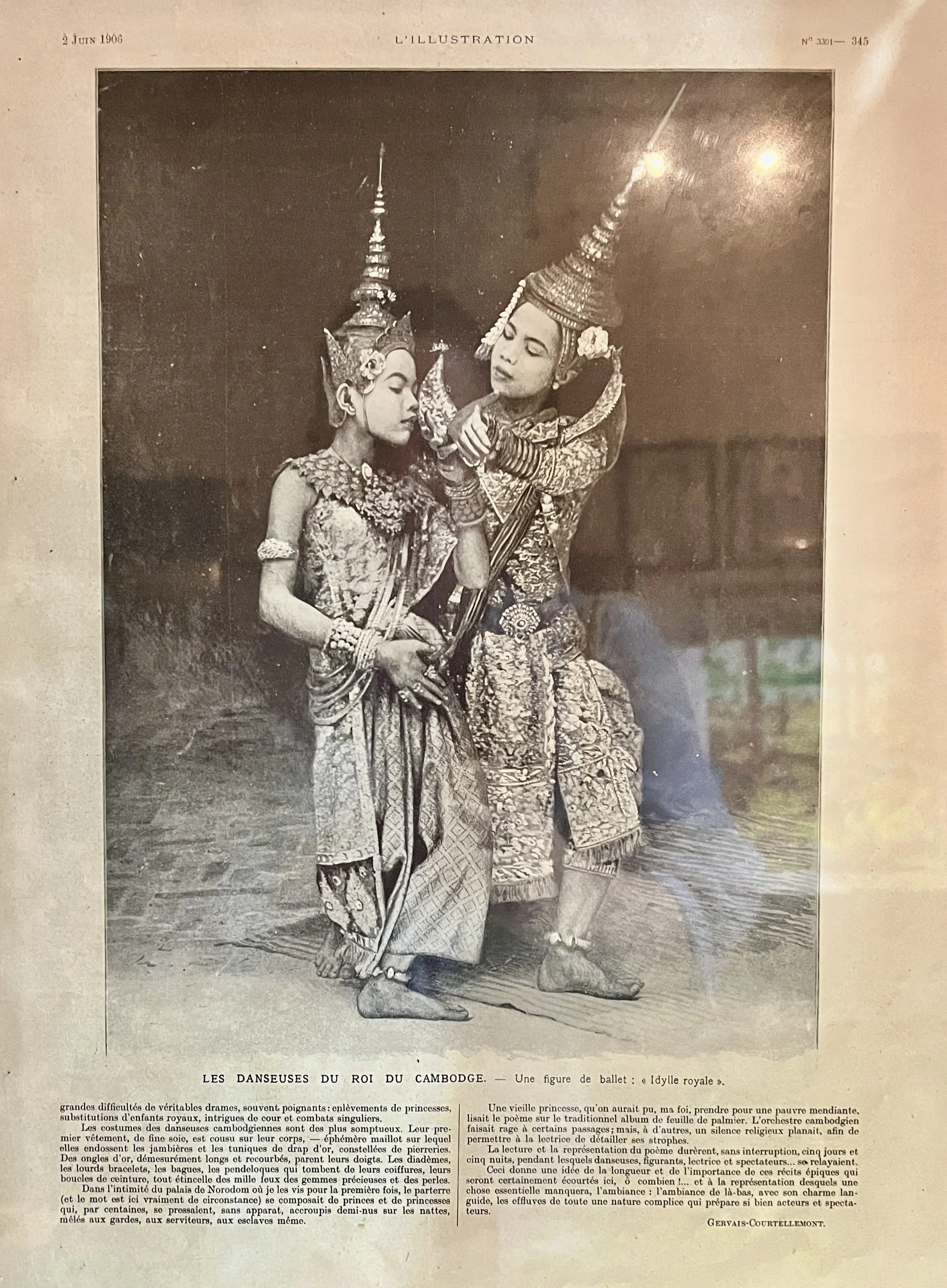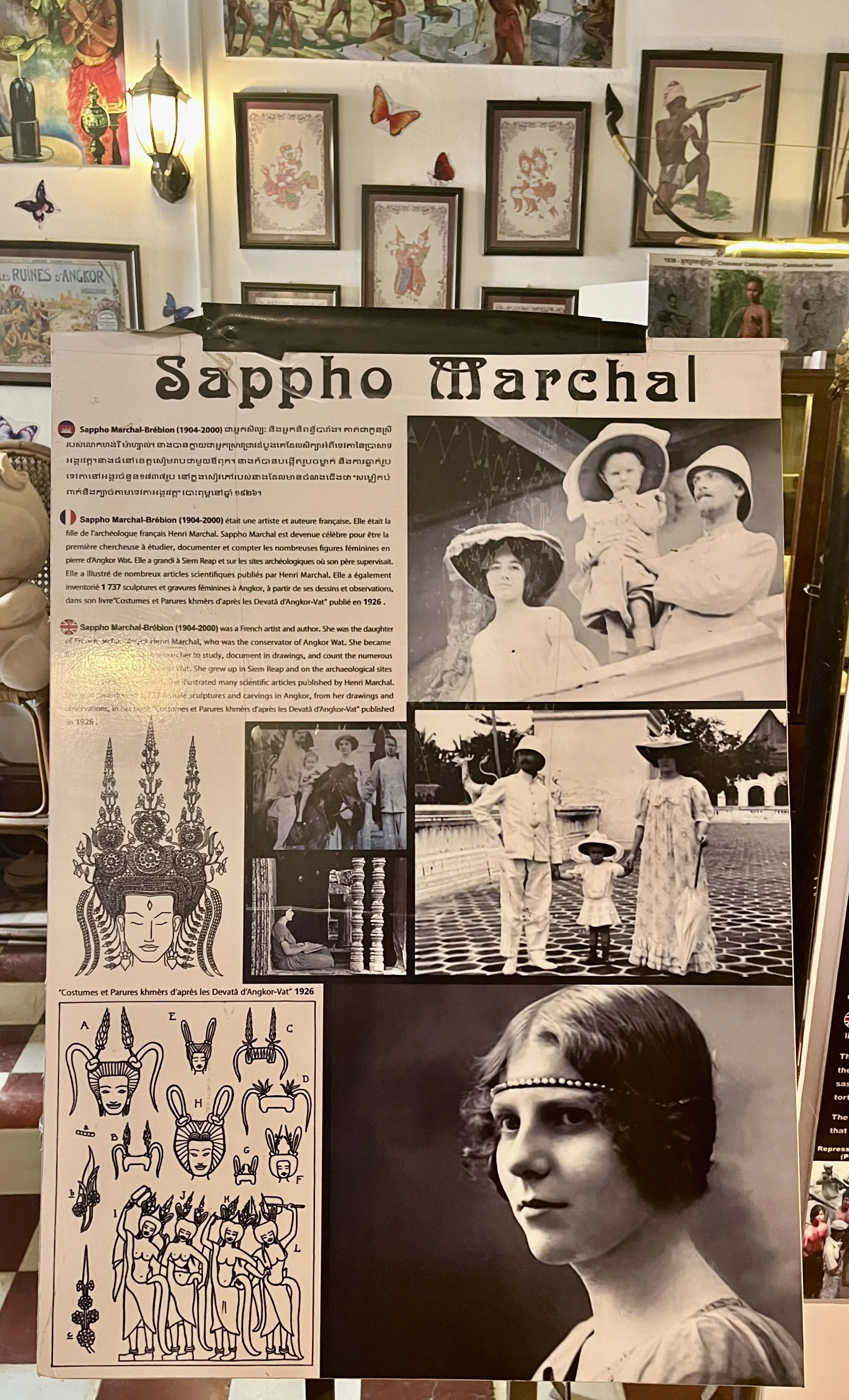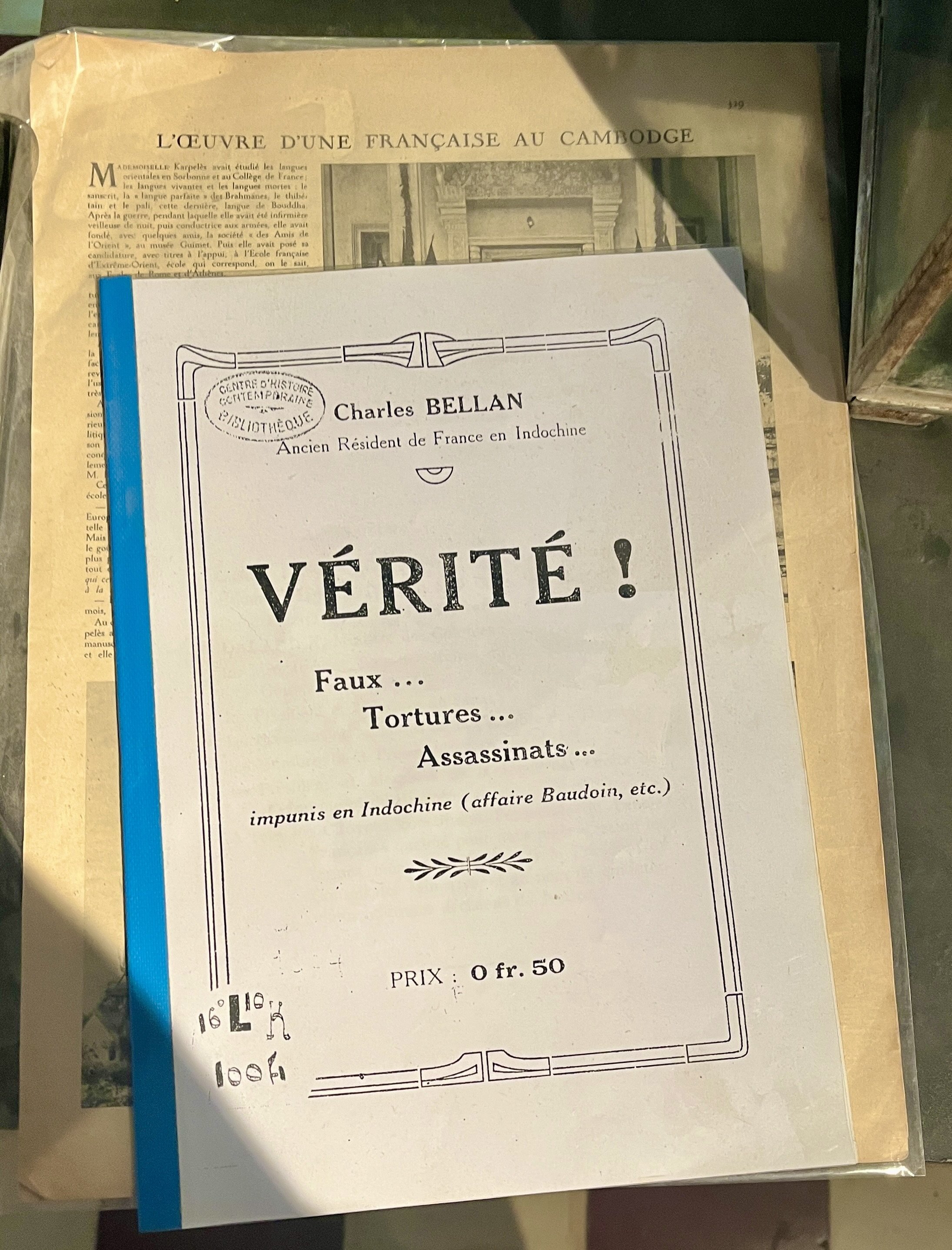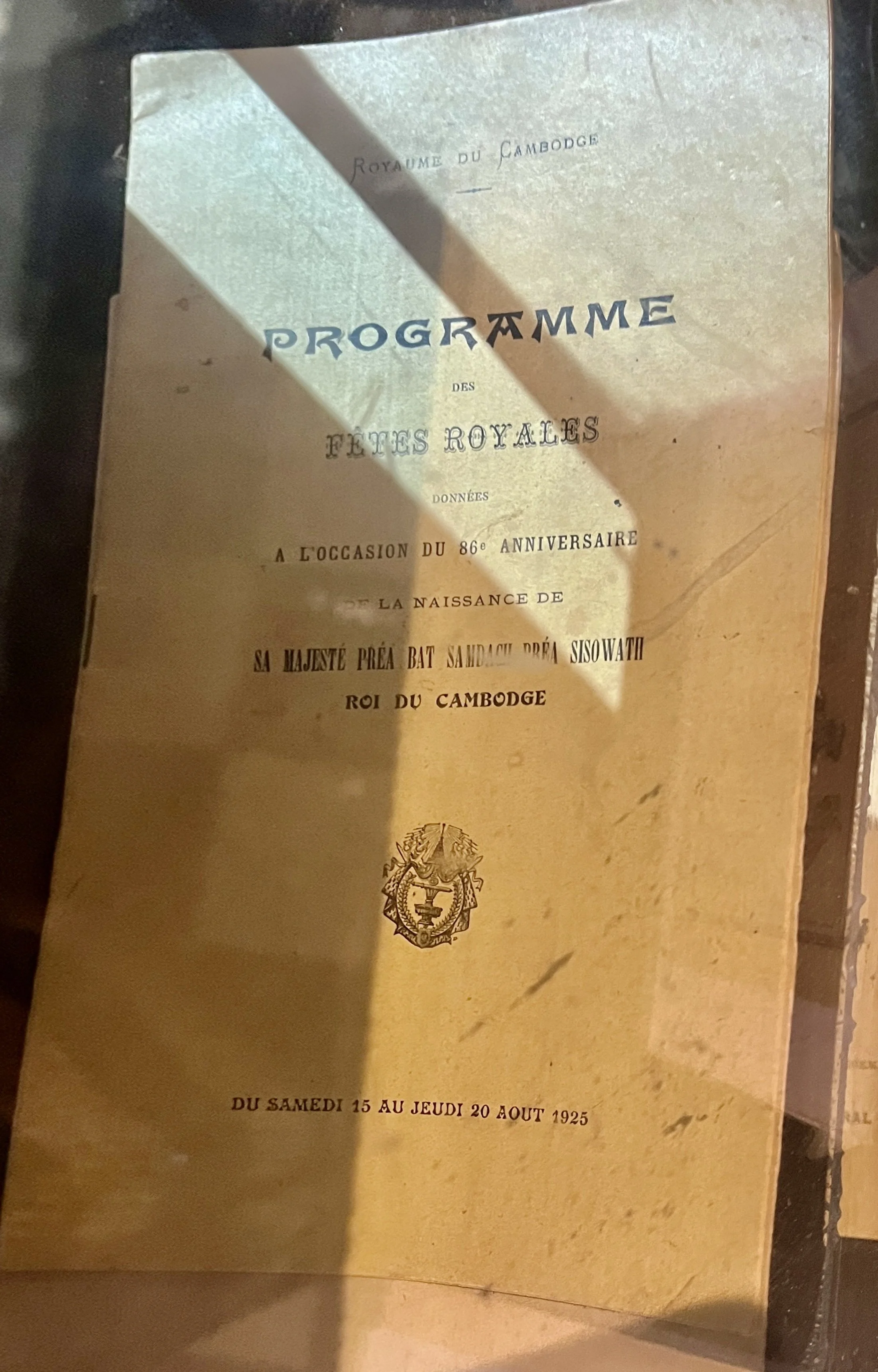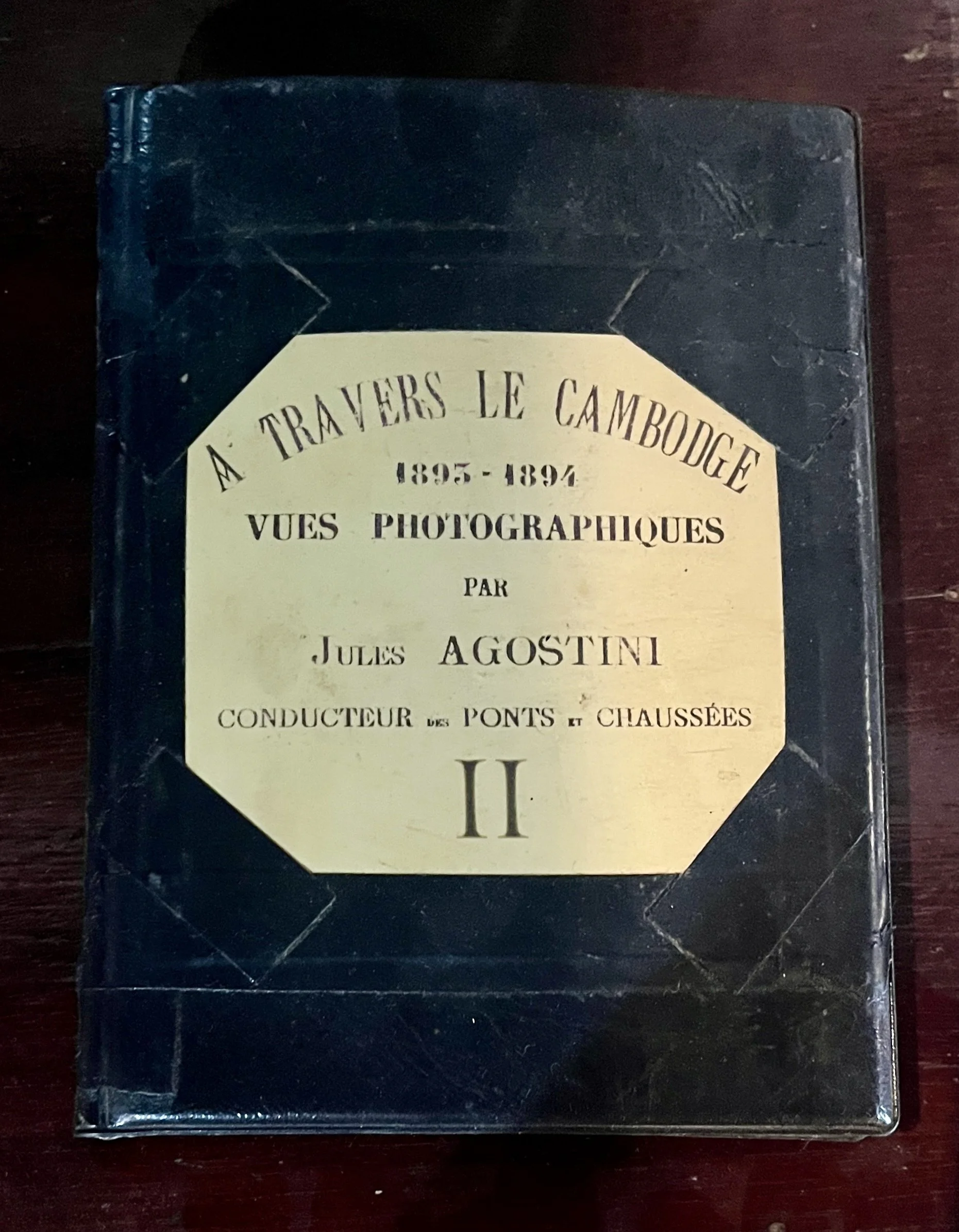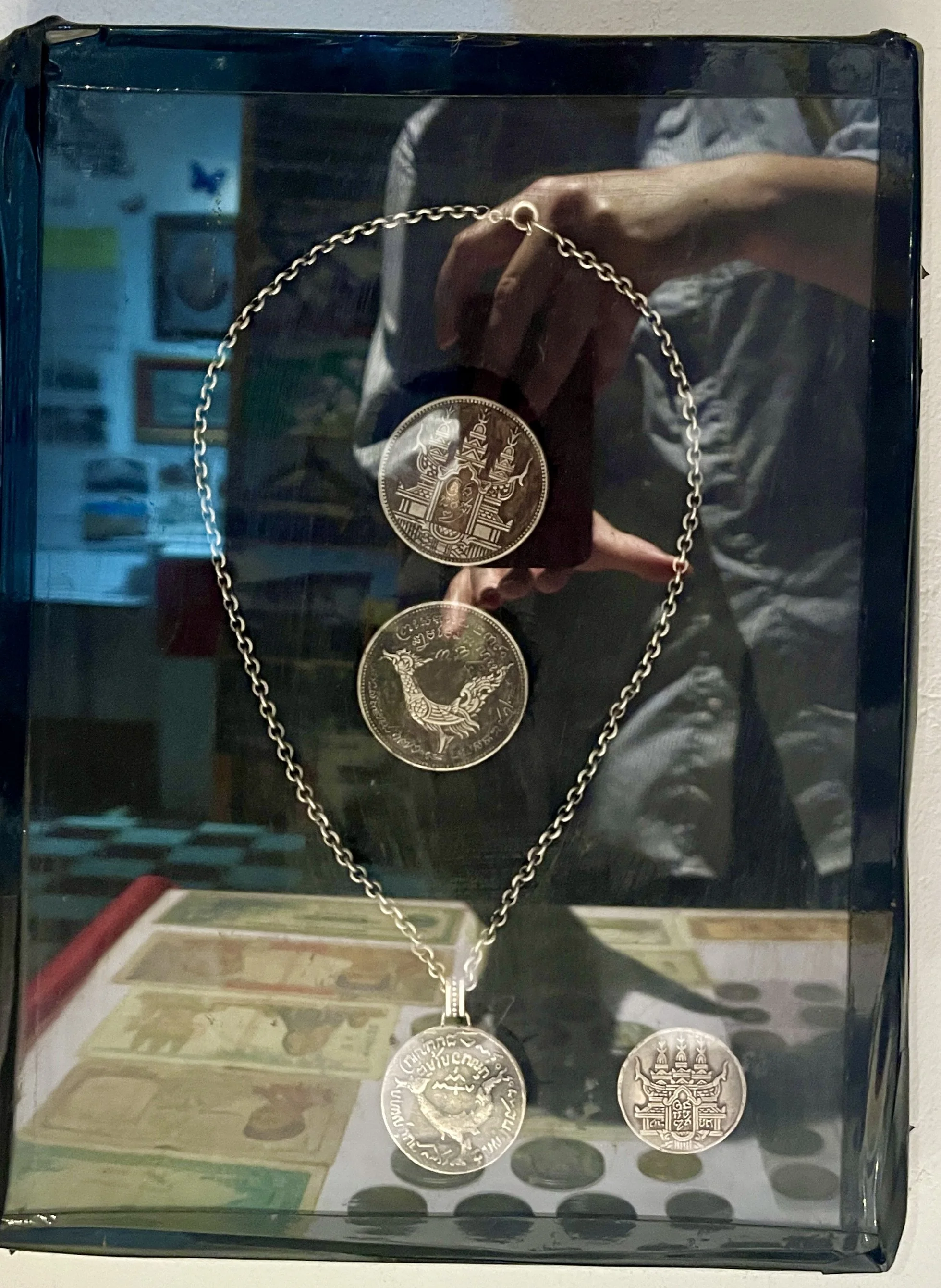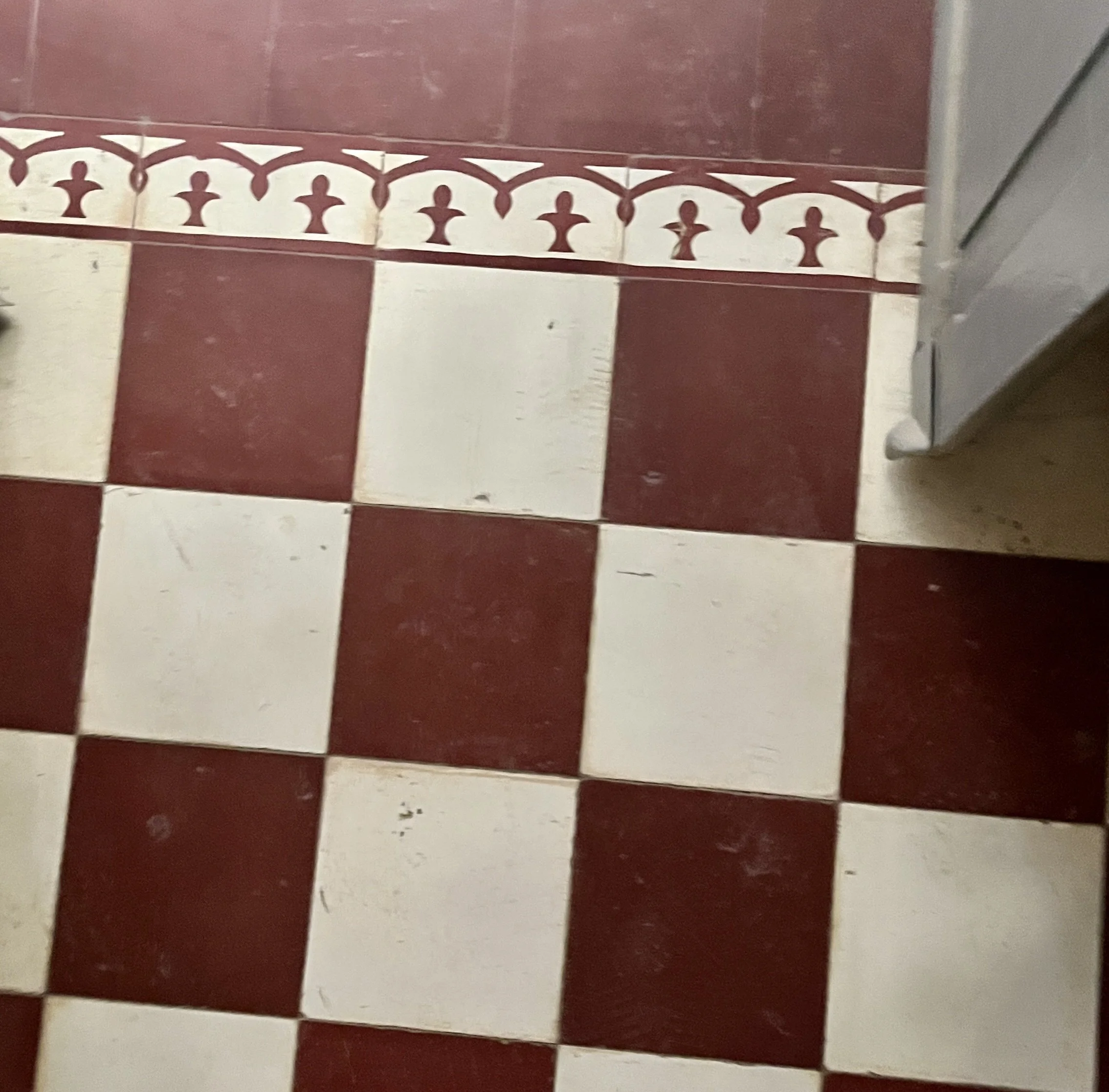As with any SEA ‘Pub Street’, there are grimy backpacker hostels, bars, and western restaurants along a couple blocks in Battambang. Despising that whole scene, I was already holding my nose– figuratively speaking– to visit KC Gallery. I was not expecting to be holding my nose literally as well, but something in this building smells absolutely hideous. It’s an unmistakable sort of animal filth smell– I noticed uncleaned bird cages and a murky aquarium, but the odor was so strong and permeated the back of house and stairwell as well, so who even knows what’s happening.
The entrance is via the downstairs burger restaurant. I initially didn’t quite realize it was a restaurant; not just because of the animals, but because there were no customers, and 2 tables and the bar/counter were covered with the owner’s dusty random shit (motorcycle helmet, cigarette packs, piles of papers, etc.) I only learned today when checking the address for this post (and going down the obligatory google maps reviews rabbithole) that the owner is considered a minor celebrity in Cambodia, a Frenchman who has totally gone native and has 3.2 million tiktok followers making Khmer language shorts. Perhaps this house is his home base when he’s not traveling, and the restaurant is more of a why not than a serious endeavor?
Anyway, I’m glad I didn’t walk out, because his collection is outstanding. I’m a longtime lover and buyer of vintage and antiques, and love to pick up a couple things wherever I travel, and I have never been to a country with such slim pickings as Cambodia. In one of his replies to a positive review of the museum, the owner said it took him years to gather these things, and I believe it! I also really appreciate that though the collection is small, there’s nothing redundant or reproduction (except of course a few printed photos/maps).
Given its state today, it’s a bit difficult to believe that in its heyday Battambang was the second most populated Cambodian city, and the most modern. Whatever of that time and status that can be recovered is represented by this collection.
Sinn Sisamouth, Ros Serey Sothea, Pen Ran, Huoy Meas, and other ‘Golden Age’ 1960s/70s Khmer pop records
Interesting map of the ethnic neighborhoods of Battambang town circa 1907
Comparing the original (still French colonial) central market and its 1936 successor, which is still used today
1940s
circa 1860s engraving by French botanist Henry Mouhot
June 2nd, 1906
THE DANCERS OF THE KING OF CAMBODIA.
A ballet figure: "Royal Idyll".
“. . great difficulties, real dramas, often poignant: abductions of princesses, substitutions of royal children, court intrigues, and single combats.
The costumes of the Cambodian dancers are among the most sumptuous. Their first garment, of fine silk, is sewn onto their bodies—a fleeting undergarment over which they wear leggings and tunics of cloth of gold, studded with precious stones. Excessively long and curved gold nails adorn their fingers. The diadems, the heavy bracelets, the rings, the pendants that fall from their headdresses, their belt buckles—everything sparkles with the thousand lights of precious gems and pearls
In the privacy of Norodom's palace where I saw them for the first time, the audience (and the word is truly appropriate here) consisted of hundreds of princes and princesses who crowded together, without pomp, squatting half-naked on mats, mingled with guards, servants, and even slaves
|
An old princess, whom one might, indeed, have mistaken for a poor beggar, was reading the poem from the traditional palm-leaf album. The Cambodian orchestra played with gusto at certain passages; but at others, a reverent silence reigned, allowing the reader to elaborate on her stanzas.
The reading and performance of the poem lasted, without interruption, five days and five nights, during which dancers, extras, the reader, and spectators... took turns.
This gives an idea of the length and importance of these epic tales, which will certainly be shortened here, oh how much so!... and from whose performance one essential thing will be missing: the atmosphere, the atmosphere of there, with its languid charm, the scents of a whole complicit nature that so well prepares actors and spectators.”
GERVAIS-COURTELLEMONT
“Sappho Marchal-Brébion (1904-2000) was a French artist and author. She was the daughter of the French archaeologist Henri Marchal. Sappho Marchal became famous for being the first researcher to study, document, and count the numerous female stone figures at Angkor Wat. She grew up in Siem Reap and at the archaeological sites where her father oversaw excavations. She illustrated many scholarly articles published by Henri Marchal. She also cataloged 1,737 female sculptures and engravings at Angkor, based on her drawings and observations, in her book "Costumes et Parures khmèrs d'après les Devata d'Angkor-Vat" (Khmer Costumes and Adornments After the Devata of Angkor Wat), published in 1926.”
Love new additions to my reading list!
And another book to read!
Beneath, an article highlighting the work of Suzanne Karpèles. According to Dhammawiki:
“After graduating in oriental studies from the University of Paris she was posted to the Ecole Francaise d’Extreme-Orient in Hanoi in 1923 where she collated Sri Lankan Pali manuscripts with Khmer ones. Two years later she moved to Cambodia . . . With the help of King Sisowath Karpeles she established the Royal Library in Phnom Penh, now the National Library, and supervised the collecting, cataloging, preserving and later the disseminating of Cambodia’s ancient literature.
She published the country’s first Buddhist periodical, started a mobile library project and arranged for the distribution of the Tipitaka in Khmer script in all the country’s monasteries. She also arranged for regular programs on Buddhism to be broadcast on state radio. With her urging and encouragement the Cambodian Buddhist Institute was founded in 1930 which was to publish and distribute dozens of works on Pāli Buddhist philosophy and traditional Cambodian culture. This helped the educated class to distinguish the Dhamma from Cambodian animistic and folk beliefs and to diminish Thai influence, allowing the Cambodian Sangha to emerge as a distinct and independent body. The Institute also became a meeting place for Cambodian writers, poets and intellectuals, several of who became leaders of the independence movement.
In 1940 Suzanne Karpeles was one of 15 Jews living in Cambodia dismissed from their posts by the pro-Nazi Vichy-French government. After the war she divided her time between her homeland and Cambodia and continued to make important contributions to Buddhism. Amongst her later works were French translations of the Dhammapada published in 1960 and Nyanatiloka’s Buddhist Dictionary, published in 1961.”
Well, I can easily predict my future: multiple hundreds of dollars will be spent at Abe books.
And on top, Truth! by Charles Bellan, subtitle: Lies, Torture, Killing . . . impunity in Indochina (the Baudoin affair etc.)
A quick search turns up nothing for ‘Baudoin affair’, though a Paul Baudoin has a French wikipedia page– apparently midway through a career as the head of the Bank of Indochina, he joined the wartime French government in May 1940 and quickly became the foreign minister in June, only to capitulate to the Nazis immediately, sign the armistice with Germany on June 25th, help set up the Vichy government, and perfunctorily resign on January 2nd 1941. Of course in March 1947 he was sentenced to 5 years hard labor for collaborating . . . but in 1948 published a book defending himself titled Nine Months in Government, which must have been somewhat reasonable as his sentence was commuted in 1949 . . . and he went straight back to the bank, where by this time he had been promoted all the way up to Chairman.
Of course, Vérité! was published in 1924, so too early for Paul. I can’t find anything about the Baudoin concerned, but am guessing Paul Baudoin was raised in French Indochina, and his father was a colonial administrator or perhaps a prominent businessman, and had some terrible scandal of his own. The whole thing is juicy and I’m particularly curious because I can’t turn up anything in cursory internet searches. At least unlike the others, Vérité! is widely available for free online at Gallica etc.
Does wikipedia have King Sisowath’s birth year wrong, did he have it wrong back then, or did they celebrate a year early? Anyway, this was his second to last year on the throne.
A fantastic collection of photos published in 1894 by a Corsican civil engineer working for the French colonial government. Thankfully, this is available online for free.
